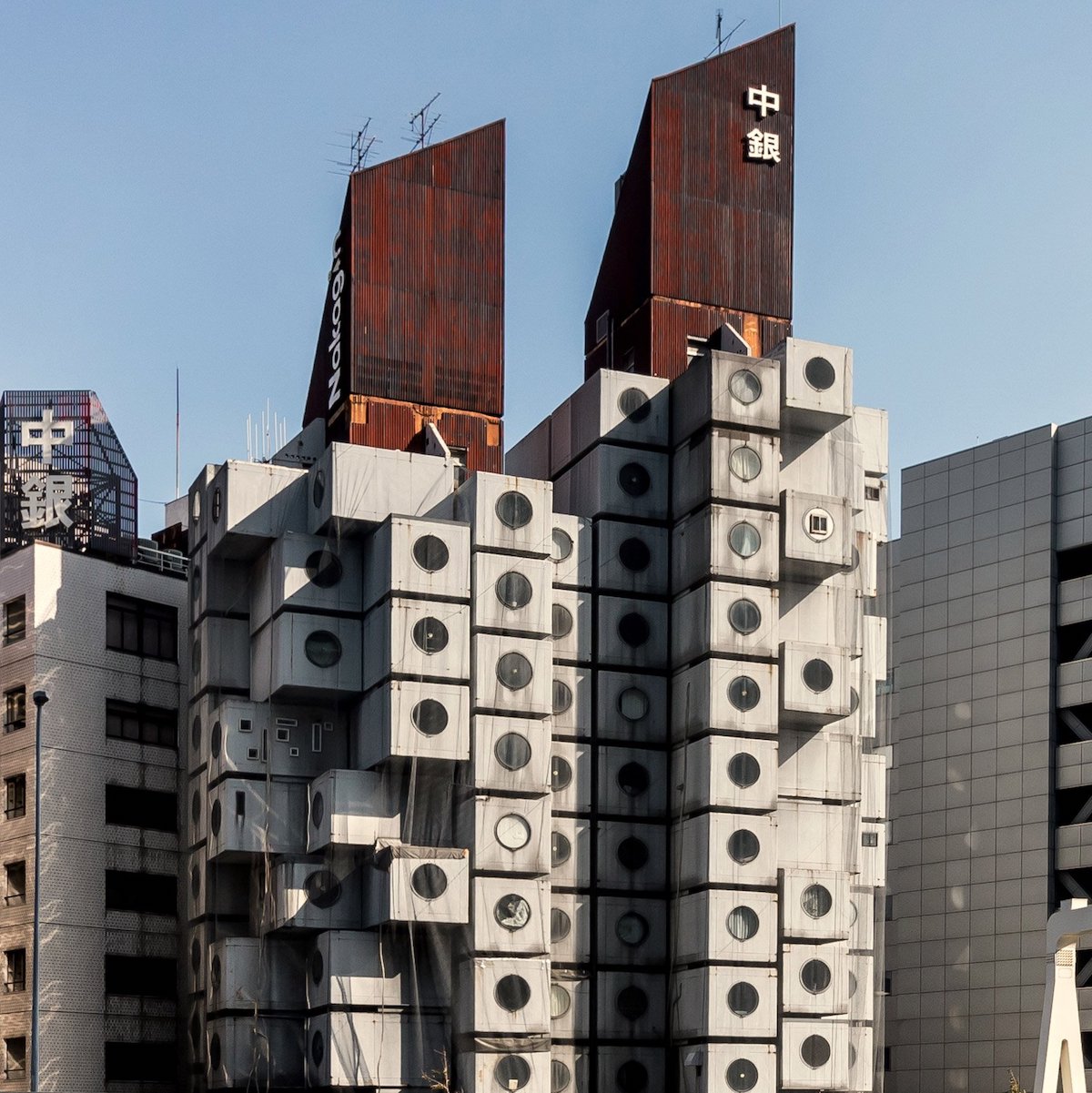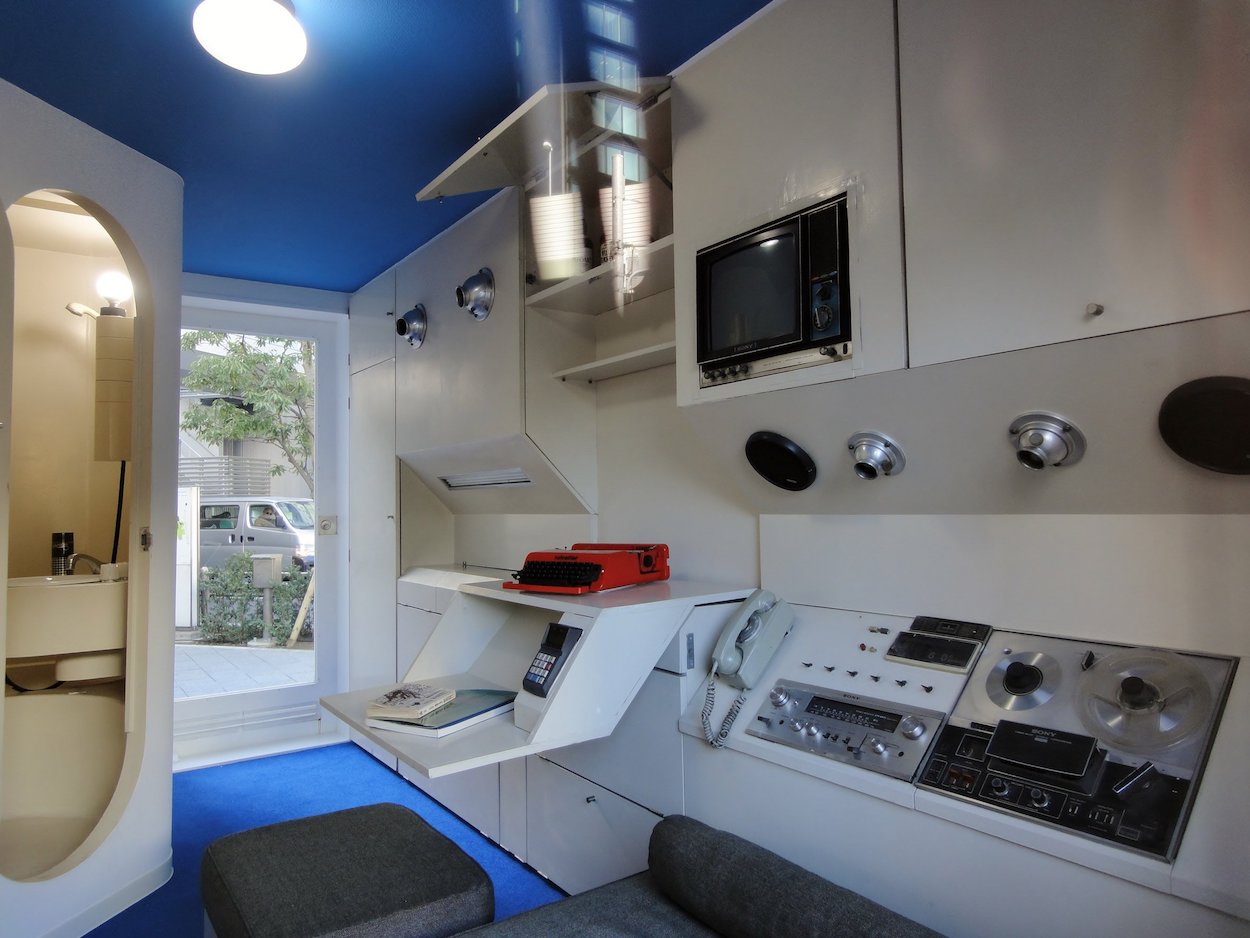In the early 1970s, the Marx-inspired Japanese architect Kisho Kurokawa envisioned a modular housing block formed of two interconnected concrete towers made of 140 prefabricated steel modules. The compact units, which measure roughly eight by 13 feet, would be outfitted with built-in furniture, cabinets, and kitchen essentials, making them ideally suited for single white-collar workers seeking no-frills accommodations. The Nakagin Capsule Tower, a key example of the rare Japanese Metabolism architecture movement that emerged during the country’s postwar cultural resurgence, was soon born in Tokyo’s Ginza district.
Kurokawa planned for each capsule to be rotated out and replaced every 25 years to keep the building fresh, but long-term squabbles with ownership and fundraising woes prevented this from happening. None of the capsules have been replaced since the original construction in 1972, and many now sit in a state of disrepair. Rumors have been swirling about its demolition for more than a decade; it was reported in 2012 that only 30 of the 140 capsules remained in use as apartments while others were used for storage, office space, or nothing at all. Few permanent residents remain, and the owners started renting out the capsules on a monthly basis to architecture enthusiasts to make ends meet while searching for a buyer.


